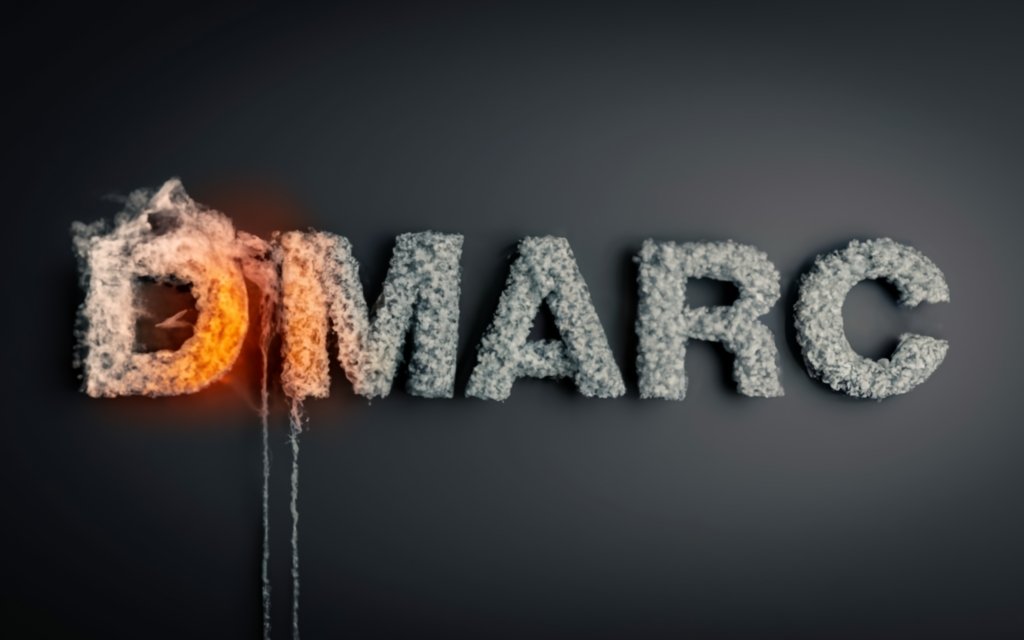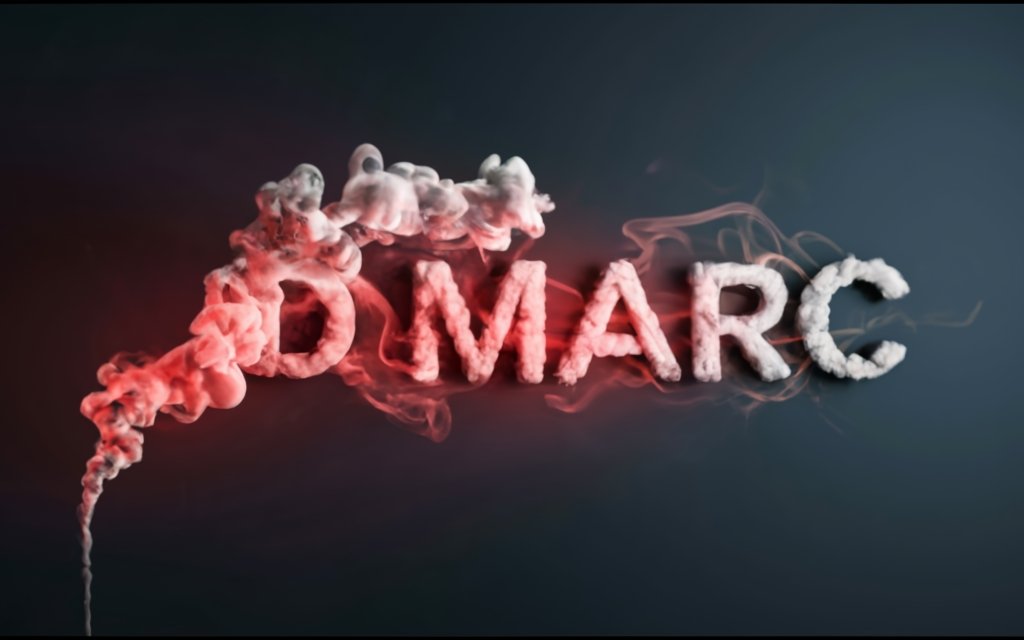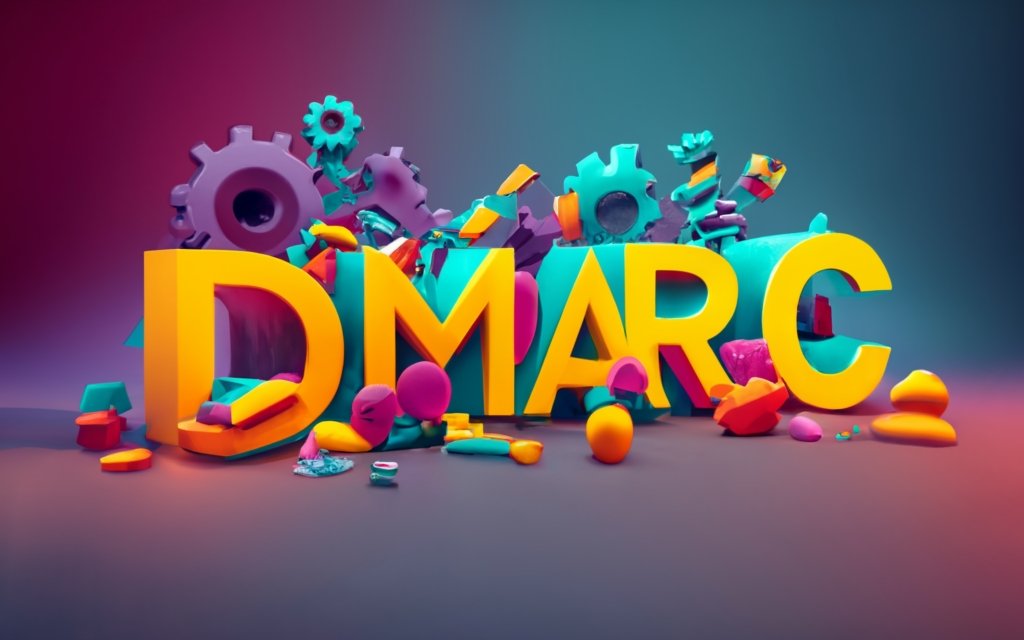Email spoofing. Phishing scams. Stolen business opportunities. If your organization sends email, you’ve felt the pain and costs of an unprotected domain. But DMARC can change all that. This comprehensive guide breaks down exactly how DMARC policies, reporting, and configurations prevent email fraud to restore trust and inbox placement for your domain.
You’ll learn insider tips on adopting DMARC properly, from initial setup all the way through advanced enforcement informed by real-world reporting data. Discover what a DMARC rollout entails and how to ensure smooth sailing every step of the way. With this top-to-bottom walkthrough, you’ll gain the clarity and confidence to finally harness DMARC and transform your email protection.
What is DMARC and Why is it Important?
DMARC (Domain-based Message authentication, Reporting, and Conformance) is an email authentication protocol that provides an extra layer of protection against email spoofing, phishing, and other cyberthreats. It allows domain owners to publish policies that specify how messages from their domain should be authenticated and handled if they fail authentication.
Implementing DMARC is critical for any organization that sends email, as it helps:
- Prevent spoofing and phishing attacks abusing your domain
- Improve email deliverability by proving messages are authentic
- Gain visibility into your email sources, volumes, and threats
- Protect brand reputation by stopping malicious emails impersonating your domain
DMARC Explained – How it Works
DMARC works by verifying that the sending domain in an email aligns with authorized sending sources for that domain. This “domain alignment” is checked in two ways:
DMARC Alignment Concept
DMARC checks that the domain in the email’s “From:” header aligns with either:
- The domain’s SPF record (sender domain)
- The domain specified in the DKIM signature
If either matches, the message passes DMARC alignment.
DMARC Policy Tags – None, Quarantine, Reject
The DMARC TXT record specifies a policy telling receivers how to handle failed messages:
- None: Monitor only (default)
- Quarantine: Mark as spam or suspicious
- Reject: Block message entirely
DMARC Reporting – RUA vs RUF
DMARC provides administrator reports to assess authentication:
- RUA (aggregate reports): Summary statistics
- RUF (forensic reports): Details on specific failed messages
Enabling reporting is key for gaining visibility into email flows.
Setting up DMARC – Step-by-Step Guide
Follow these steps to configure DMARC for your domain:
Generate DMARC Record
Use a DMARC record generator to create a valid DMARC record tailored to your needs.
Add DMARC Record to DNS
Add the DMARC record to your domain’s DNS as a TXT record. This publishes your DMARC policy.
Configure DKIM and SPF
Ensure DKIM and SPF are properly configured so messages can pass DMARC alignment checks.
Activate DMARC Reports
Add RUA and RUF tags to receive detailed aggregate and forensic reports. Analyze these regularly.
DMARC Alignment – Common Failure Reasons
Some common reasons DMARC alignment fails:
Domain Alignment Failures
The “From:” domain doesn’t match SPF or DKIM identifiers, indicating spoofing.
No DKIM Signature Configured
The message lacks a valid DKIM signature, preventing DKIM alignment.
Unlisted Sending Sources in DNS
Sources like mailing lists aren’t authorized in SPF, causing SPF failures.
Email Forwarding Issues
Forwarding can strip DKIM signatures or modify headers, leading to failures.
Interpreting DMARC Reports – Key Metrics
DMARC reports provide visibility into:
Failed Mail Volume
The total volume of mail that failed alignment checks.
Authentication Results
Breakdowns of SPF vs DKIM authentication failures.
DMARC Policy Applied
Counts of messages quarantined or rejected due to DMARC.
Top Sources of Failed Mail
Domains and IP addresses sending high volumes of unaligned mail.
DMARC is a critical email authentication protocol that protects domains from unauthorized use and spoofing. Proper configuration verifies message alignment, enforces domain policies, and provides reporting visibility to improve email security and deliverability.

DMARC Best Practices – Achieving Success
Implementing DMARC can significantly improve your email security and deliverability, but it requires following some best practices to achieve success. Here are key recommendations for rolling out DMARC properly:
Start with Monitoring “None” Policy
When first implementing DMARC, use a “none” policy that monitors without enforcement. This allows you to:
- Receive alignment reports (RUA/RUF) to assess your email ecosystem
- Identify any issues with authentication or source alignment
- Avoid blocking legitimate mail before configurations are optimized
Starting in monitor-only mode gives you time to optimize configurations before ramping up enforcement policies.
Configure DKIM & SPF Properly First
Before activating DMARC enforcement (quarantine or reject), ensure DKIM and SPF are properly configured for your:
- Primary sending domains
- All authorized third-party sending services
- Any mailing lists or forwarding servers
This prevents authentication failures and avoids major delivery issues when DMARC policies take effect.
Key steps include:
- Publish valid SPF records covering all authorized sending IP addresses and subdomains.
- Add DKIM signatures, including for third-party senders.
- Use relaxed domain alignment at first to allow subgroup domains.
- Check DNS propagation of records.
Proper DKIM and SPF setup is crucial for DMARC alignment.
Work With Third-Party Senders
Email sent on your behalf by third-party services also needs to be DMARC compliant.
To address this:
- Enable DKIM signing in mail clients like Gmail and Outlook.
- Ask external email services to support SPF and DKIM.
- Add their sending domains/IPs to your SPF records.
- Review DMARC reports to identify third-party issues.
- Update their configurations or policies accordingly.
Getting third-party mail authenticated is key for successful DMARC enforcement without blocking legitimate mail.
Update Unaligned Forwarding Servers
Email forwarding can cause DMARC failures since messages are resent from new servers that aren’t aligned.
To avoid this:
- For SMTP forwarding, ensure the new outbound SMTP server has DKIM signing enabled to maintain an aligned signature.
- For cloud forwarding services, use domains instead of raw email addresses for the forwarding target. This preserves the original domain alignment rather than adding the service’s domain in the header.
- Update SPF records to include forwarding service IPs.
- In reports, identify unaligned forwarding sources and update them.
Properly authenticating forwarded mail prevents DMARC alignment issues.
Continuously Analyze Reports
DMARC reports provide the data you need to refine configurations, policies, and migrations for success.
Be sure to:
- Review aggregate reports (RUA) frequently for overall progress and statistics.
- Dig into forensic reports (RUF) to identify and address specific problem areas.
- Add reporting addresses one at a time to isolate services.
- Spot third-party issues, align forwarding servers, uncover hidden domains, etc.
Ongoing report analysis provides critical visibility for a successful DMARC rollout.
Enforce Gradually Using Reporting Insights
Use a phased enforcement approach based on report findings:
- Start with “none” to monitor without blocking.
- Once configurations optimized, move to “quarantine” to tag failures as spam.
- Then switch to “reject” for full enforcement once reports are clean.
- Adjust the “pct” percentage tag to gradually ramp up enforcement.
- Pause between phases to address issues revealed in reports.
A slow and steady increase in enforcement ensures you catch any issues before full “reject” policies take effect.
Key Takeaways
Following DMARC best practices helps ensure a smooth and successful rollout:
- Configure DKIM and SPF fully before enforcement
- Start in “none” monitor-only mode
- Work with external senders on compliance
- Update forwarding servers causing alignment failures
- Analyze reports frequently and make informed policy adjustments
- Enforce gradually using “pct” tag and pauses between phases
Patience and vigilance in following these recommendations will lead to an effective DMARC implementation that improves email protection and deliverability without major disruptions.
DMARC Pricing – What Are Your Options?
When implementing DMARC, you have a few options for how to manage it and what pricing models are available:
Self-Service DMARC Tools
Self-service DMARC tools allow you to manage DMARC configurations and reporting analysis yourself without ongoing managed services.
Pricing models include:
- Free tools: These provide limited capabilities like DMARC record generation and basic reporting. Good for very small businesses just starting out but lack robust features.
- Monthly subscriptions: Full-featured DMARC software tools start around $35/month for small businesses and go up to $150+/month for enterprises. More features and capabilities than free tools.
- Annual subscriptions: Monthly costs can be reduced slightly (10-15%) with annual committed billing. Popular for established DMARC programs.
Benefits:
- Lower cost than managed services
- Maintain full control and software access
- Scalable to grow with your needs
Considerations:
- Requires hands-on DMARC expertise
- No assistance optimizing configurations
- Can be time consuming to analyze reports and tune policies
Full-Service DMARC Providers
Full-service providers offer assisted onboarding and configuration but require you to handle ongoing management and policy updates.
Pricing includes:
- Set-up fees: Typically $500 – $1500+ for initial consulting and DMARC record deployment.
- Monthly subscriptions: Start around $50/mo and provide reporting software access and ad-hoc assistance.
Benefits:
- Expert guidance for initial setup
- Supports DIY management approach
- Lower monthly cost than fully managed
Considerations:
- Limited ongoing optimization assistance
- Manual analysis and tuning still required
- More costly than self-service software
Managed DMARC Services
Managed providers handle the full DMARC lifecycle, from deployment through ongoing maintenance and policy enforcement, as a fully outsourced service.
Pricing consists of:
- Per-domain fees: Average around $3 – $5/month per domain, with discounted rates for larger volumes.
- Set-up fees: Typically waived or minimal ($100 – $200) for partnerships involving multiple domains.
Benefits:
- Complete DMARC expertise with no need for in-house skills
- Ongoing management and updates by provider
- Optimal configurations maintained over time
Considerations:
- More costly than self-service for small # of domains
- Less control compared to DIY tools
- Provider manages policies and data access
The best option depends on your needs. Self-service tools work well for companies with DMARC expertise who want control. Outsourcing to a full managed provider offers maximum optimization but at a higher cost. Evaluate capabilities, resources, and use cases when choosing.

FAQs – Common DMARC Questions
Why is my DMARC policy not being applied?
There are a few possible reasons why your DMARC policy may not be taking effect:
- DNS issues – If there are errors in your DMARC DNS record or problems with propagation, receivers won’t know your policy. Check your record syntax and confirm it’s present across DNS worldwide.
- SPF/DKIM misconfigurations – For your DMARC policy to apply, messages must fail both SPF and DKIM alignment checks. Issues like a missing DKIM signature or unaligned SPF record will prevent policy enforcement. Ensure SPF and DKIM are properly set up.
- Third-party mail errors – If third-party services like CRMs and mailers aren’t DMARC compliant when sending your mail, their messages may continue to fail checks and bypass policies. Work with them to ensure DKIM signing and SPF alignment.
- Forwarding problems – Mail forwarded through services can break alignment and bypass DMARC rules. Configure forwarding servers to maintain signatures and headers.
- Using “pct” tag – The “pct” tag defines the percentage of failed mail your policy applies to. A value of “pct=20” would mean only 20% of failures have policies enacted. Raise the percentage or remove the tag.
Check your DNS, configurations, third-party services, forwarding, and “pct” settings if your expected DMARC policy isn’t being applied.
How do I troubleshoot DMARC errors?
- Review DMARC aggregate and forensic reports for details on failures, including top unaligned sources.
- Check SPF and DKIM validation results in email headers to identify issues.
- Confirm your DKIM public keys and SPF records are valid.
- Use a DMARC analyzer to catch DNS record errors.
- Enable reporting from transactional mail services and monitor for problems.
- Analyze traffic from mailing lists and forwarders.
- Spot-check messages from top senders in reports to isolate causes.
- Check alignments from various recipient domains.
- Temporarily use more relaxed alignment modes during testing.
Methodically reviewing reports, headers, DNS records, traffic sources, and message alignments will help uncover specific DMARC configuration errors.
What happens if DMARC fails?
The consequences of DMARC failure depend on your published DMARC policy:
- None – Emails that fail DMARC in “none” policy are delivered as normal. No action taken.
- Quarantine – The receiving mailbox provider will reroute failed emails to the spam or quarantine folder.
- Reject – Emails that fail DMARC validation when using “reject” are bounced and not delivered.
Failures when using “none” allow phishing and spoofing to pass through. “Quarantine” tags suspicious emails but still delivers them. Reject” completely blocks fake emails. Tighter policies provide more protection but require proper configurations to avoid blocking wanted mail.
Can I have DMARC without DKIM and SPF?
DMARC relies on DKIM and SPF for message authentication, so some minimal DKIM/SPF setup is required for DMARC to function properly.
However, you can publish a DMARC “none” policy without having full DKIM and SPF configured everywhere yet. This will allow you to start receiving reports to uncover issues before enforcing policies.
But any level of DMARC enforcement (“quarantine” or “reject”) requires having DKIM and SPF in place to pass checks, or else legitimate mail will be blocked.
So use a “none” policy first if you need time to finish configuring DKIM and SPF across all authorized sending sources.
How long does it take to see DMARC reports?
It typically takes 3-7 days after activating reporting to begin receiving your first DMARC aggregate reports from receivers like Gmail and Outlook.
Forensic reports can take 7-14 days to start populating.
Delays are due to:
- Report processing time after mail is sent
- Report sending cadence (daily, weekly, etc)
- Slow propagation of your DMARC DNS record changes
Immediate aggregated statistics are provided by DMARC monitoring tools, ahead of the reports arriving directly from mail receivers.
Set up reporting across your subdomains and transactional domains, and give it up to two weeks before incoming reports fully reflect your sending landscape. Analyze reports consistently to maximize their value.
Other Common Questions :
What is DMARC?
DMARC is an email authentication protocol that allows senders to specify policies in DNS telling receivers how to handle unauthenticated email claiming to be from their domains. It prevents spoofing and phishing.
How does DMARC work?
DMARC works by verifying the sending domain aligns with authorized sources in SPF and DKIM. If neither match, the domain alignment fails and DMARC takes action based on the published policy in DNS.
What are the DMARC record tags?
The main DMARC tags are:
- v – Protocol version
- p – Policy (none, quarantine, reject)
- pct – Percentage of mail affected
- rua – Aggregate report recipient
- ruf – Forensic report recipient
What is DMARC alignment?
Alignment refers to matching the email’s “From” domain with either the SPF domain or DKIM domain to authenticate it came from an approved source.
What are DMARC reports?
DMARC report types:
- RUA – Aggregate reports with summary stats
- RUF – Forensic reports detailing specific failures
How long does DMARC take to set up?
Plan for about 1-2 weeks to generate a record, add DNS entries, configure DKIM/SPF, and start seeing reports. Ongoing refinements take longer.
What impact does DMARC have on email delivery?
Enforcing DMARC with tight policies can negatively impact email deliverability until configurations are perfected. Take a gradual approach to avoid problems.
What happens if DMARC fails?
A DMARC failure means the email didn’t pass alignment checks. The policy (none, quarantine, reject) determines the result.
Can I use DMARC without DKIM and SPF?
Limited “none” policy monitoring is possible without full DKIM/SPF setup, but enforcement requires both to pass checks.
How do I troubleshoot DMARC errors?
Use DMARC reports, header analyses, DNS record checks, message traces, etc. to identify misconfigurations causing failures.
What tools are available for generating DMARC records?
Self-service tools like EasyDMARC’s DMARC Record Generator help properly format policies and tags for your DNS entry.
Where do I get a DMARC record?
You generate your customized DMARC record based on your wanted configuration and publish it as a TXT entry in public DNS.
How much does DMARC cost?
DMARC costs vary from free tools to full-service providers charging setup fees plus ongoing management. Typical ranges:
- Self-service tools: $0 – $150/mo
- Managed providers: $5 – $15/mo per domain
How is DMARC enforced on subdomains?
Subdomains inherit the root domain’s DMARC policy by default. You can customize subdomain policies separately.
How long are DMARC reports stored?
DMARC report data retention varies by provider. For example, EasyDMARC stores reports for 1-3 years based on plan.

The Key Takeaways on DMARC
Implementing DMARC can transform your email security and deliverability, but requires a thoughtful approach. Here are the key takeaways:
- DMARC prevents spoofing and phishing by verifying senders are authorized to send mail from your domains.
- Proper configuration of DKIM and SPF is crucial before enforcing DMARC policies to avoid blocking wanted mail.
- Use a gradual rollout, starting in monitor-only mode and increasing enforcement over time based on reports.
- Analyze DMARC aggregate and forensic reports constantly to refine configurations and policies.
- Work with third-party mailbox providers and mailing services to ensure their compliance.
- Adjust unaligned forwarding servers to maintain message authentication.
- Leverage DMARC reporting to gain visibility into your complete email ecosystem.
- Enforce policies judiciously using “pct” percentage tags, and pause between phases to address issues.
- Choose between self-service tools, full-service providers, or managed services based on your needs and resources.
Following DMARC best practices, analyzing reports diligently, and using a phased rollout will help ensure your success in boosting email protection.

